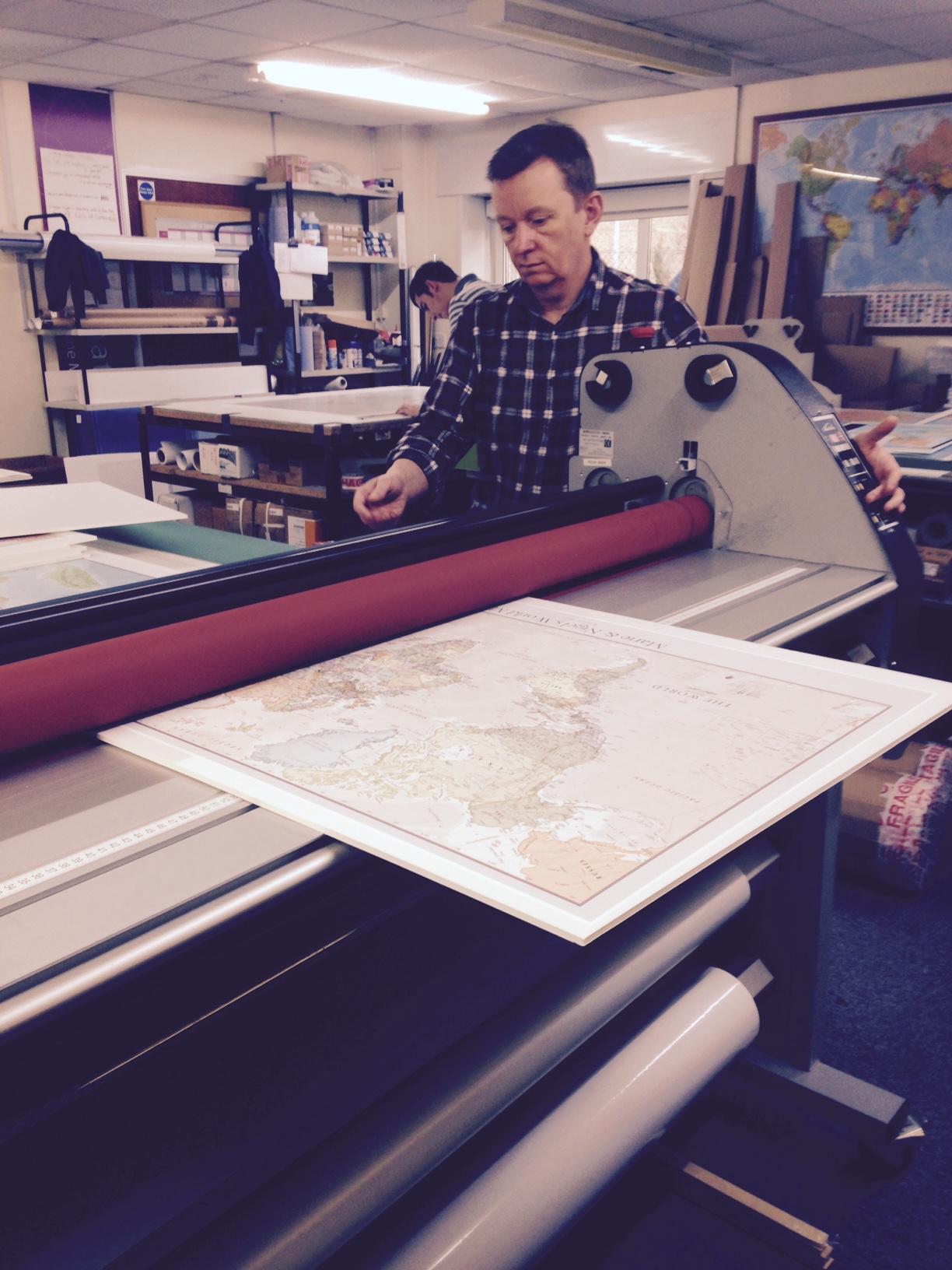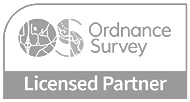When considering the printing element of a map project, there may be a choice to make between digital and lithographic or ‘litho’ printing. There are several factors which will influence this choice:
1. Quantity of copies required. In terms of the set up time, litho printing is usually more suitable for larger runs, and digital for smaller quantities.
2. Complexity of final product. For a complex publication that has multiple sheets that need collation, for example, into a booklet, digital printing is likely to be more appropriate, as copies can be run in order. Litho printing will run off all copies of one sheet at a time, which will require time to collate off the press.
3. Speed of turnaround. Digital printing has a much quicker set uptime, so printing can start soon after print files are received. Litho printing requires plates to be made and machines calibrated before printing can commence. Litho printed stock may also need to be left to dry before folding or collation, adding to production time.
4. Weight of paper stock. Digital printing is more limited in the variety of paper stock that can be used, typically between 70 and 300gsm, whereas litho printing paper stock outside of this range.
5. Type of material required. As a general rule, a litho printer can handle a greater range of materials than a digital machine, such as vinyls and canvas.
6. Price. Litho printing attracts higher costs due to the set up time, so digital is cheaper for a short print run.
7. Complexity of print. If a sheet needs to be overprinted subsequently with a different finish, litho print is much more forgiving.
8. Personalisation. Digital printing can be run through as individual sheets, so the print file can be varied for each print.
9. Ink. Specialist inks, such as metallic or latex, are suited to litho printing rather than digital.
10. Proofing.In order to avoid expensive re-setting up in litho printing, proofing of the final product can only be reasonably done by checking an early print in the run. For digital printing, a proof can easily be run off prior to print commencement without any cost implications.
11. Consistency. Litho printing will produce a consistent image every time, with exact colour matching on each print. With digital printing, especially with a staggered production run, there is a possibility of some variance in colour, particularly over large areas of one block colour.







Comments are closed here.